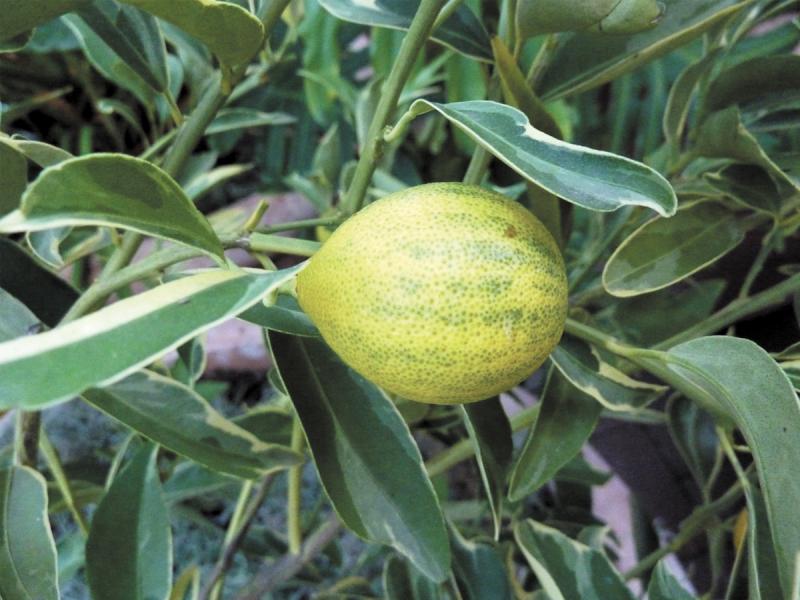It is December and time for orange juice. If you like citrus fruits, you probably like the juice: golden orange and sweet. But there is a citrus fruit with a secret: the juice is sour and the skin is sweet!
The kumquat (Fortunella obovata Fukushu) has edible thin skin with a sour flesh that can make you pucker up. It almost tastes like a mixture of oranges and tangerines, and you can eat the fruit, peel, seeds and all. The Fukushu kumquat is two to three inches in diameter, and is shaped more like a small round orange than the more familiar egg-shaped kumquats.
Luckily, you can easily grow the Fukushu kumquat in a pot on the patio or indoors. This is a large variety of kumquat from Japan that will bloom in the summer with white flowers that have the signature powerful orange blossom scent. Even when not in bloom or hanging with fruit, the glossy leaves make it a nice evergreen houseplant.
Kumquats are high in Vitamin C, Vitamin A and potassium, so they are excellent anti-inflammatory and antimicrobial foods. You can eat Fukushu kumquats fresh out of hand or cook them into jams, chutneys and marmalade. Many times, kumquats are boiled in sugar, and the candied fruits can top everything from cheesecake to birthday cake. Add them sliced raw into salads, especially bitter greens where they contrast nicely with flavors such as arugula or endive. Because kumquats have lots of citric acid, they can help your kidneys by preventing kidney stones from forming.
For good drainage, use porous pots such as unglazed clay pots for the best root health. Only fertilize kumquats when they are actively growing in spring and summer. Use a fertilizer specially made for citrus, or use an all-purpose slow-release fertilizer. You can also use liquid kelp, fish emulsion or any organic liquid fertilizer. Water your kumquats when the soil is dry to the touch, but do not overwater. The roots can rot in constantly wet soil. Ideal potting soil will be neutral with a pH around 6.
When growing Fukushu kumquats indoors, try to give the plant as much sunlight as you can. Since these are tropical plants, give them a spot in full sun, the sunnier the better. It takes a lot of energy to bloom and produce fruit, so if possible set your kumquat tree outdoors in the summer. If your house is too dark, add grow lights.
Your kumquat tree probably won’t need pruning except to remove suckers that might sprout from the trunk. Only prune after you pick the fruit in mid to late winter, but before the plant blooms again.
Try something a bit different this year and grow a potted Fukushu kumquat tree. You will be rewarded with lush, tropical green foliage and orange fruits that are sweet on the outside and bitter or sour in the middle. Just like our favorite relatives.
























































